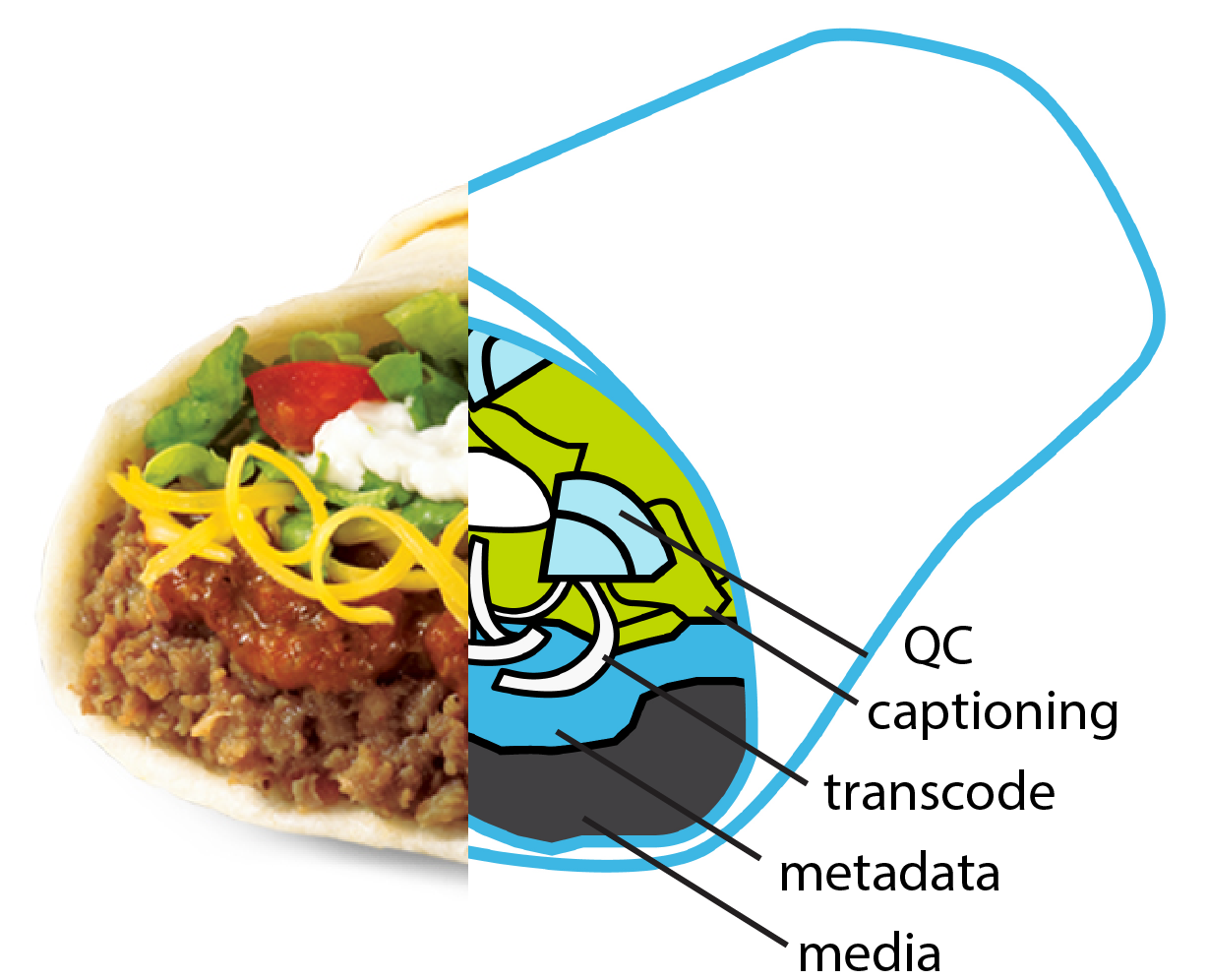
Managing media is exactly like building a burrito.
…Or building a car. But the burrito price point has proven to be a closer match.
We’ve worked with one content owner at the forefront of the migration to cloud-based supply chains that has fully embraced principles of supply chain manufacturing in what they do. For Warner Bros. Discovery, media is the raw material they bring in. They process those materials to create products for distribution, and they forecast and measure the production costs against expected and actual returns. Their thinking about their business has transformed from a purely creative endeavor to a manufacturing model that strives to strip waste, inefficiencies, and excess cost out of the production process and maximize their potential return by keeping them informed and agile about the distribution channels they use.
In this cultural revolution, they evolved a principle that is now referred to as “Burrito Economics”. According to Josh Derby, Vice President of Technology Development & Strategy at Warner Bros. Discovery, just as the creation of a burrito involves selecting ingredients and combining them to create a product that the customer wants, the content manufacturing process involves multiple touches and tweaks to make the final product right for the customer. In a burrito, each ingredient (guacamole, beans, cheese, or chicken) has a cost. Likewise, explains Josh, the ingredients for creating content are simply the processes you perform and the components you use to create the end product: QC, transcode, captions, segments, etc.
So, if the cost of a burrito is the cost of the ingredients plus the margin the vendor wants, a content owner adopting these the principles of “Burrito Economics” can predict the cost of making products for particular platforms, and accurately determine the margin available for any given deal. What Josh and the Warner Bros. Discovery team found, as it turns out, is that the cost of making a piece of content for any given platform should be roughly the same cost or less than a good burrito!
Applying these principles across their supply chain, team can now accurately predict the cost of each and every ingredient that goes into their content manufacturing process, can see the total cost to create any particular derivative, and can allocate those costs by show, season, deal or channel. They’ve gone on to share the Burrito Economic theory with others, and I know of at least three major content owners who are adopting and embracing it.
That’s how a burrito can improve the economics of your media supply chain.


